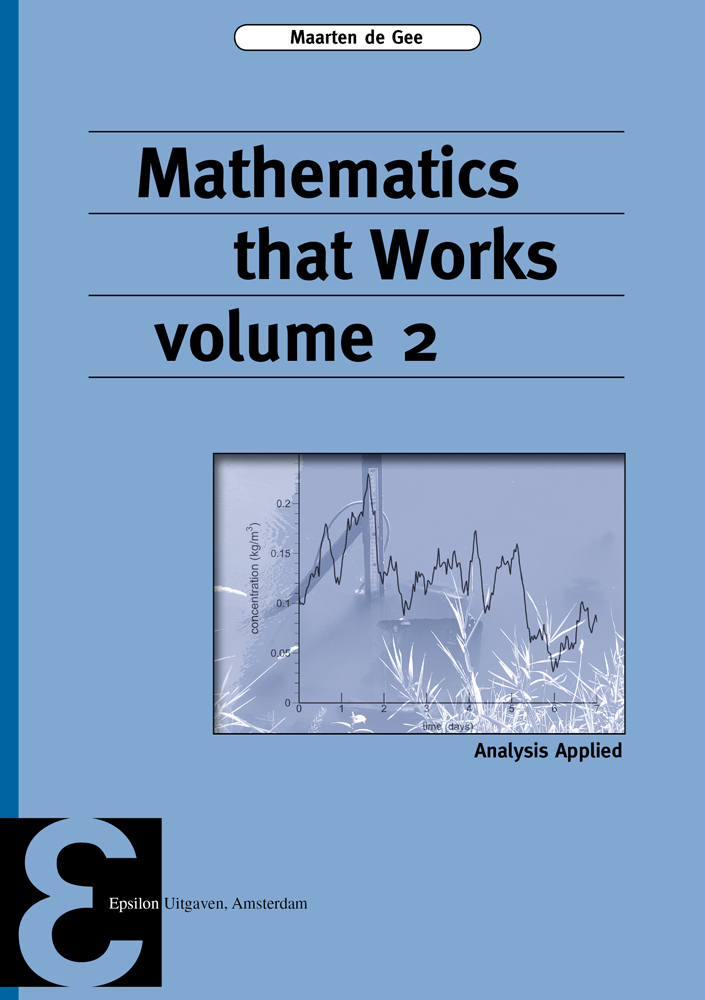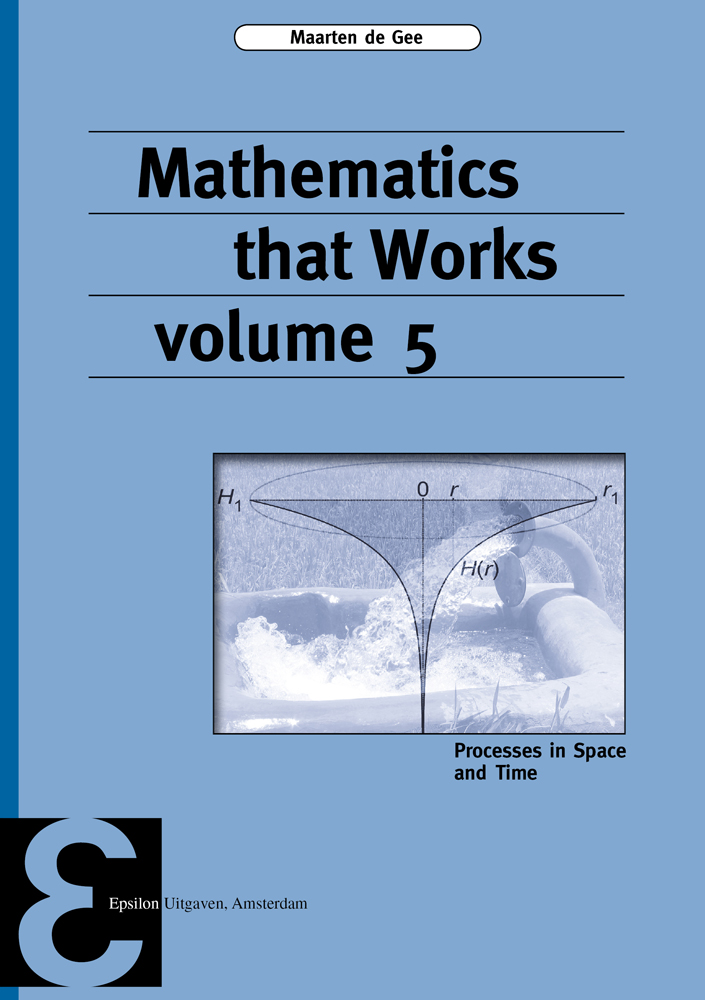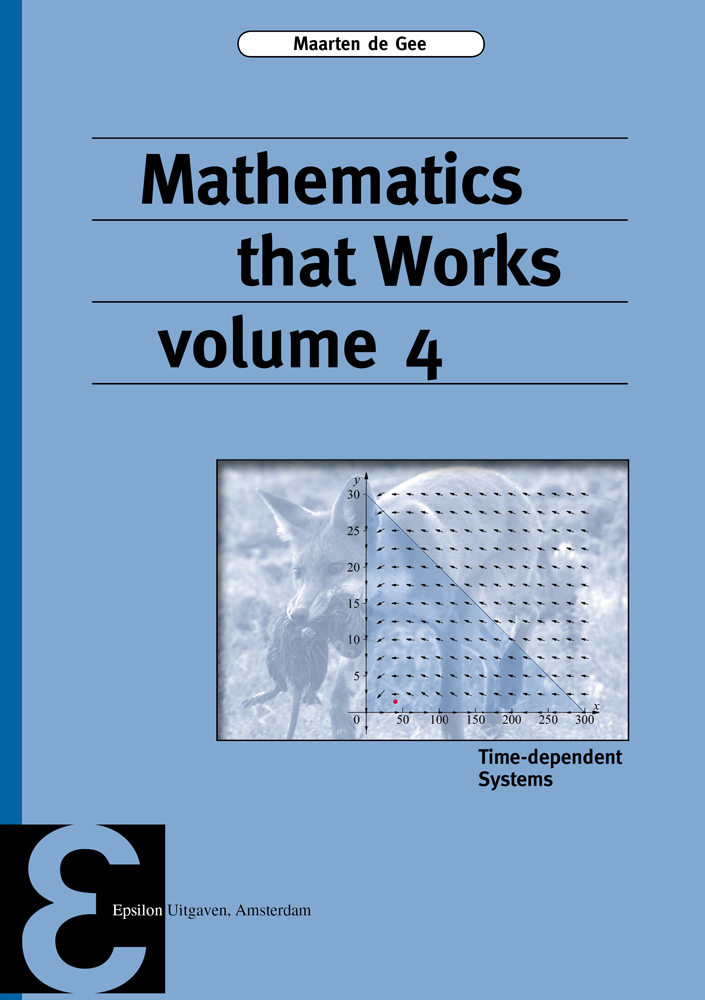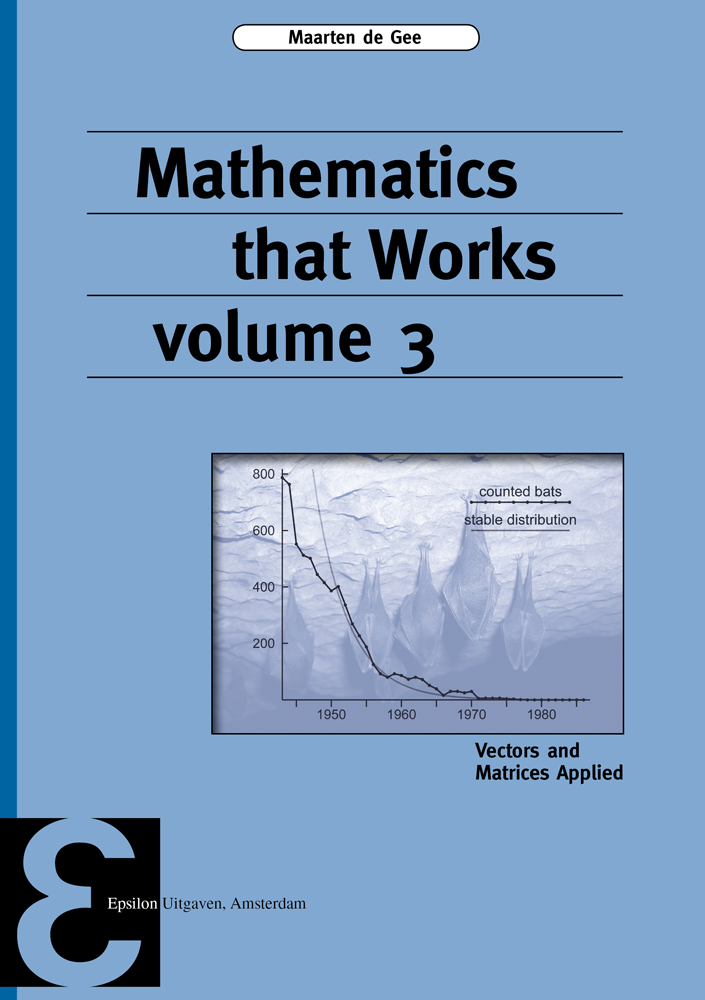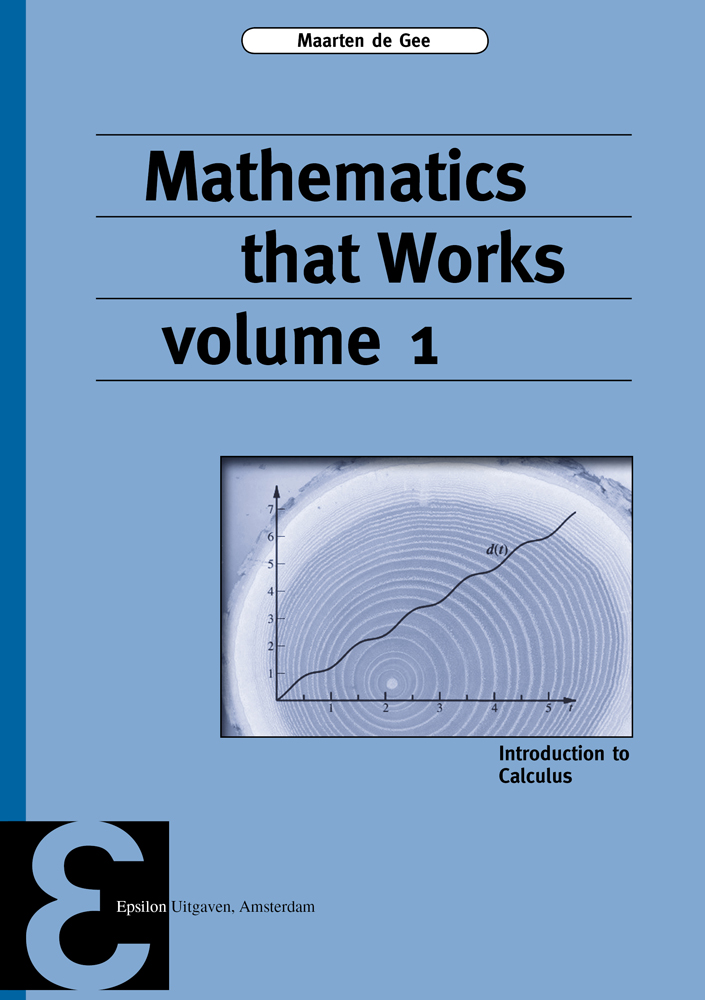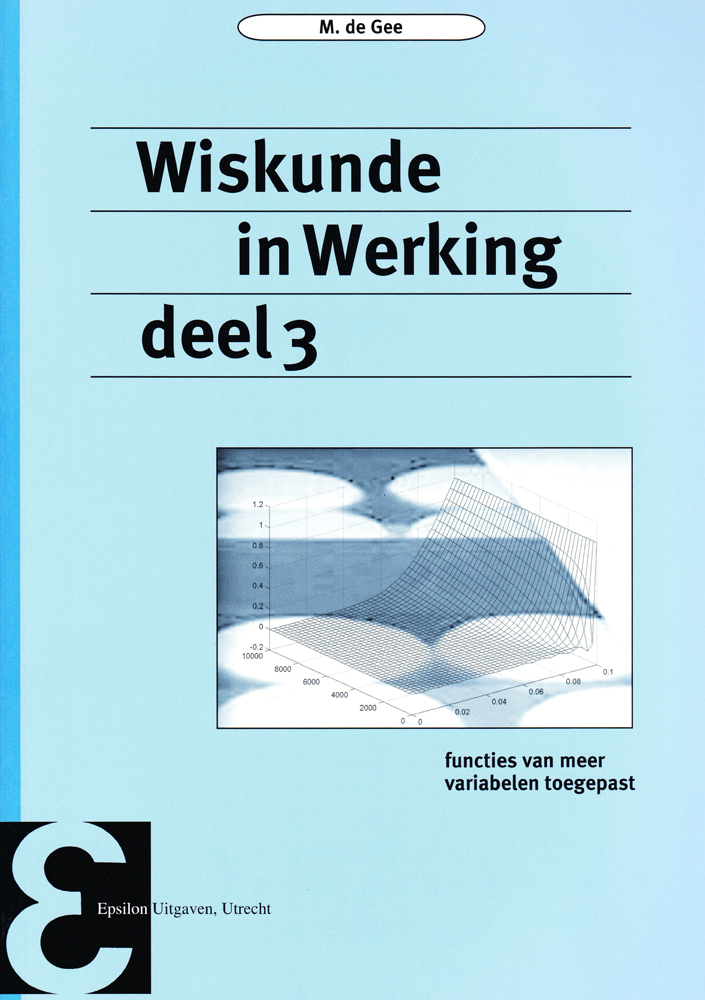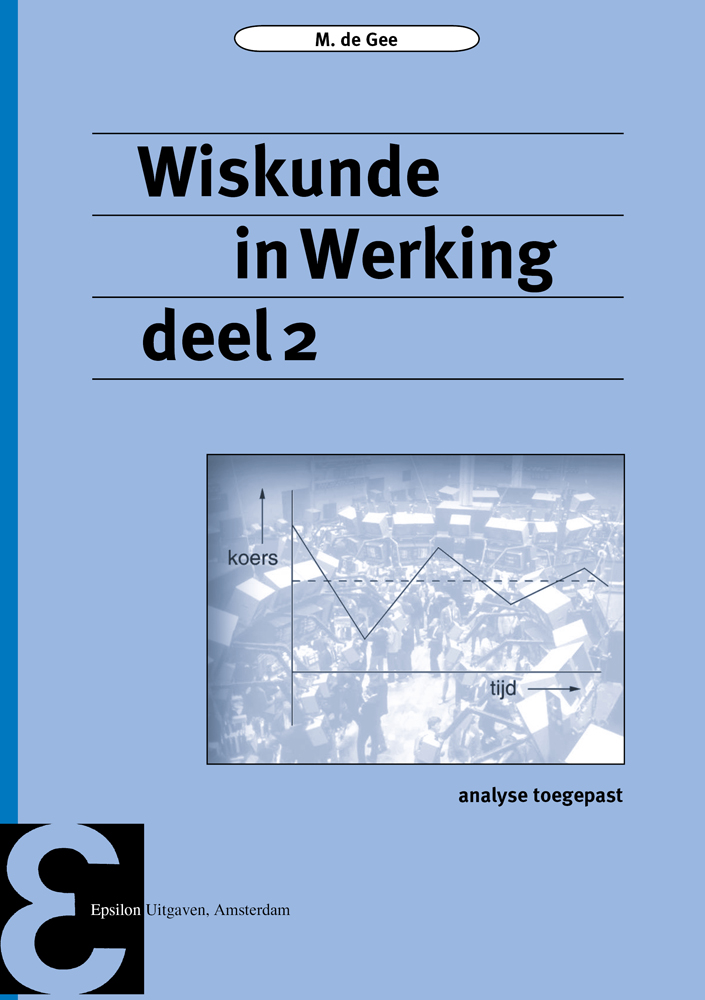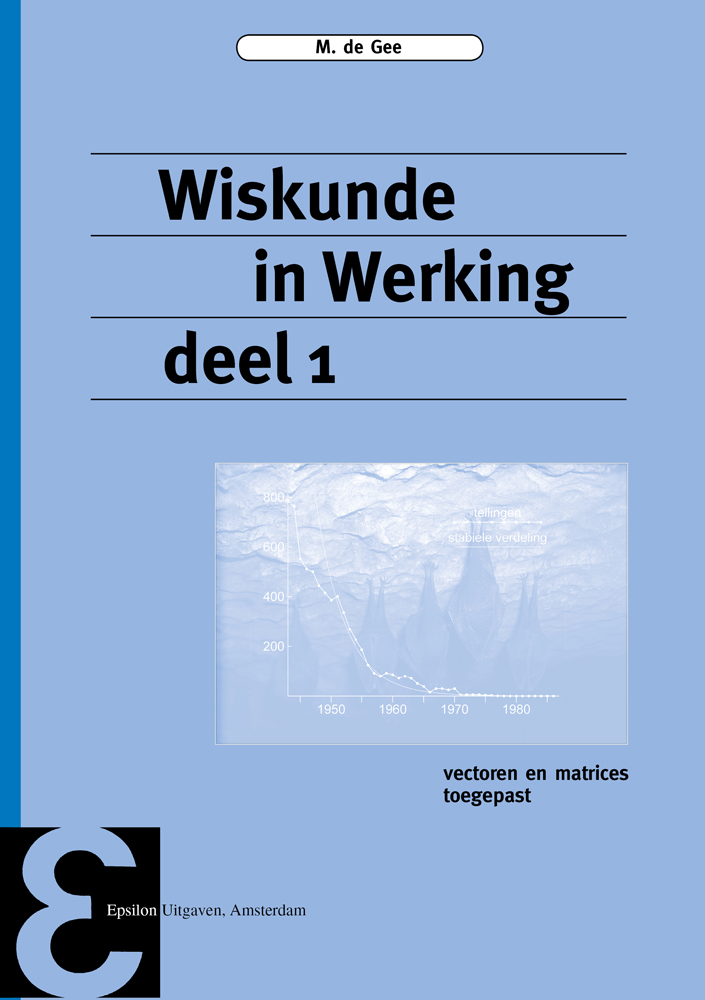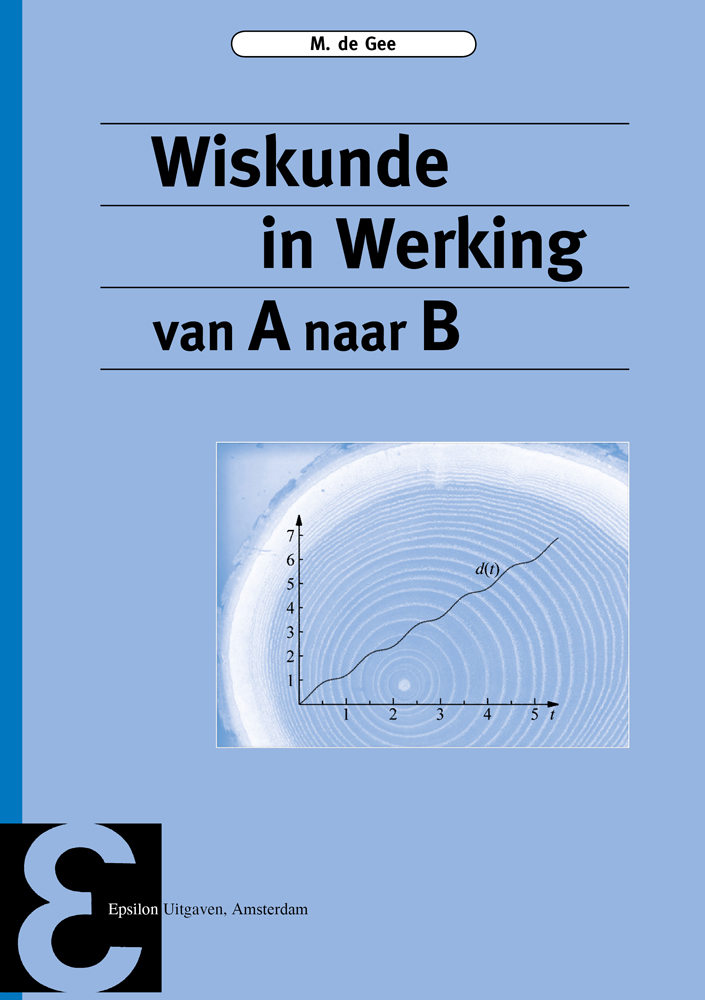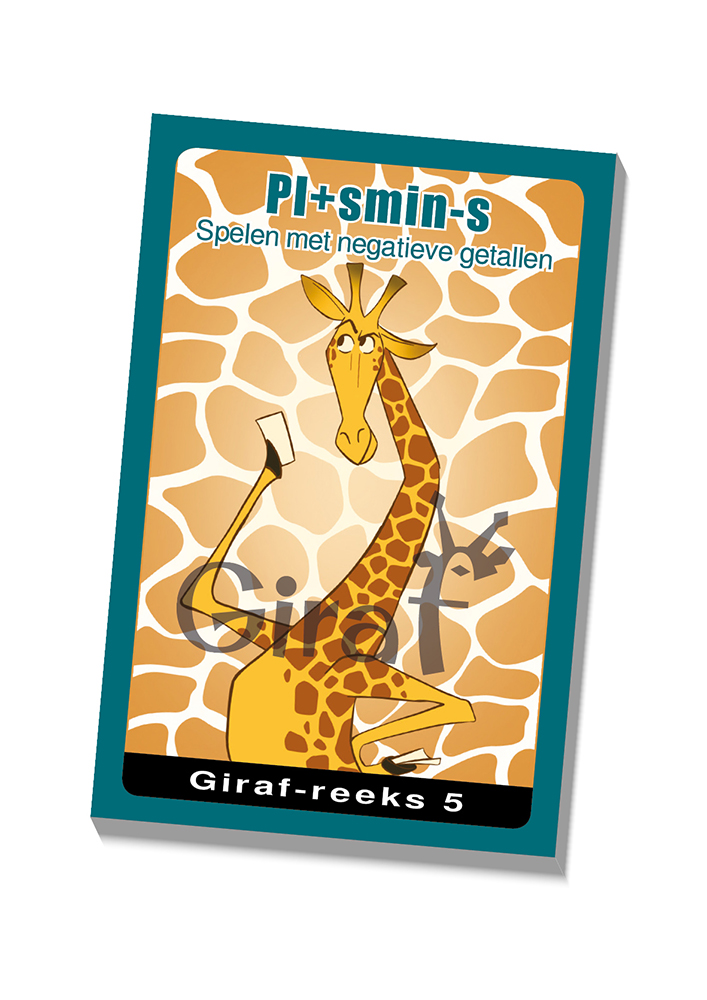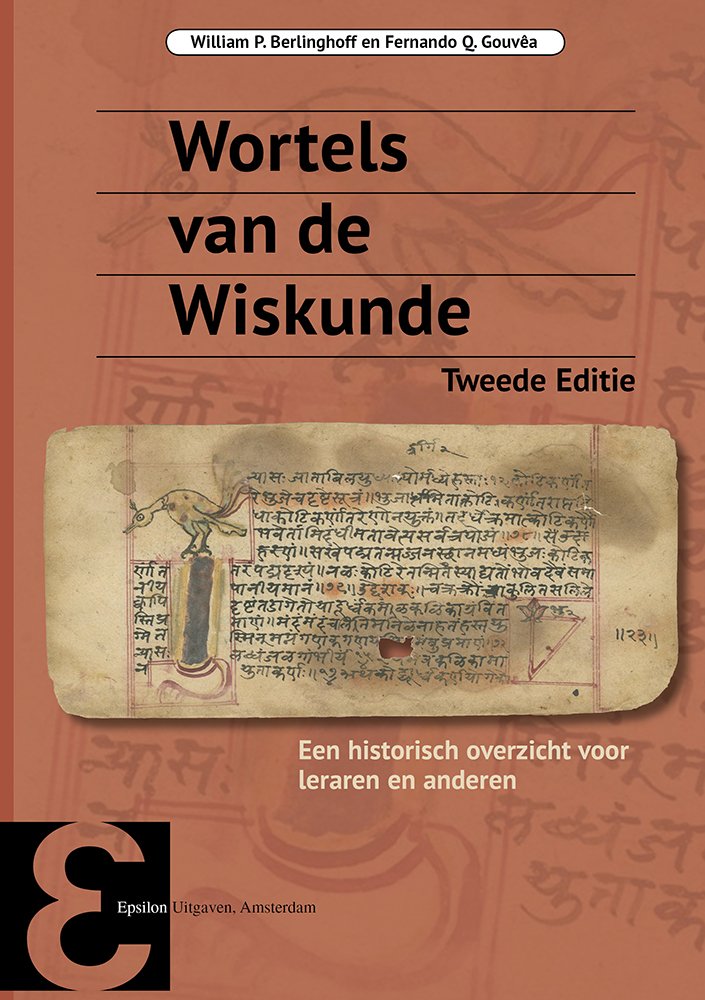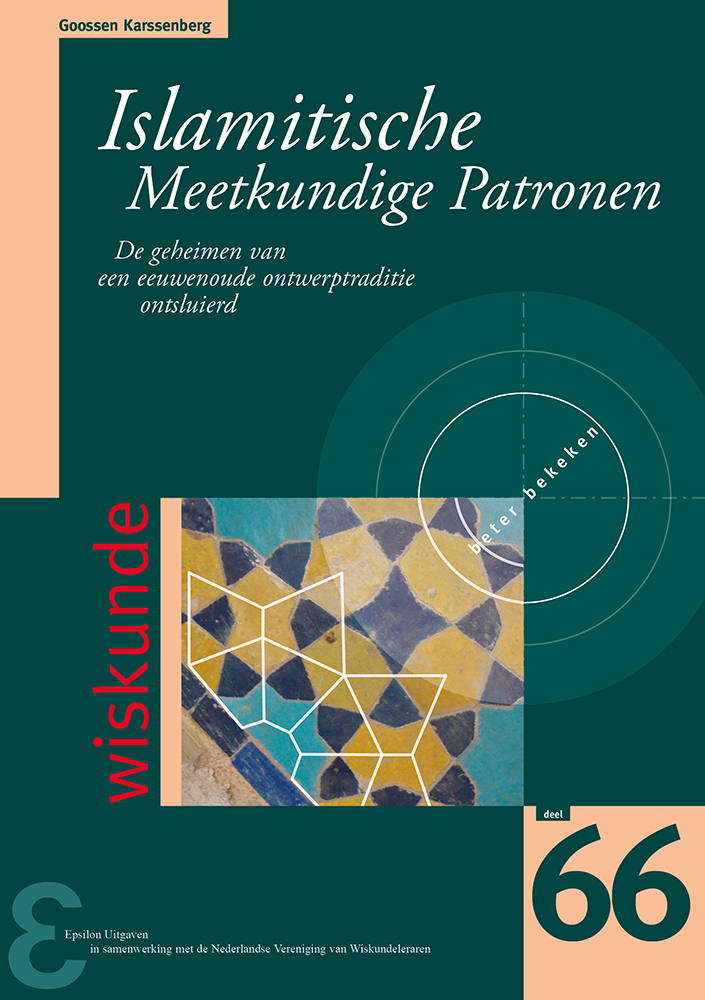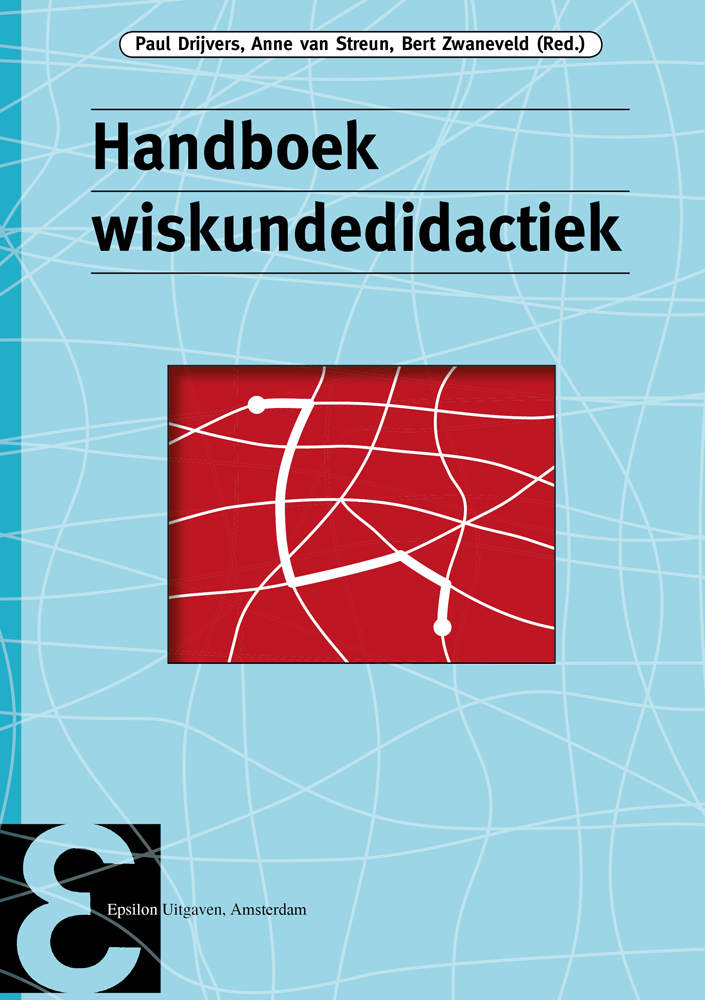Mathematics that Works volume 2
Analysis Applied
Maarten de Gee
€ 37,-
incl. 9% BTW
Building on the introduction to calculus in volume 1, this second volume of Mathematics that Works presents a more in-depth treatment of elements of calculus: integration techniques, and differentiation and integration of functions of two variables. Besides, it introduces iterative processes and differential equations. These latter topics are especially rich in applications. In the discussion of these applications and the interpretation of their results, the first steps in mathematical modelling are made.
This volume is the equivalent of the Dutch Wiskunde in Werking deel 2.
Deel: Epsilon Uitgaven 91 | ISBN: 9789050411684 | Druk: 2, 2020 | Aantal pagina’s: 410 | Onderwerp: analyse, toepassingen van de wiskunde | Doelgroep: studenten universiteit
Maarten de Gee works in a group of applied mathematicians and statisticians at Wageningen University. Their mathematical research includes systems biology, food physics, weather- and climate models, hydrology and population dynamics.
- Functions and their derivatives
- Sequences, series, and iteration processes
- Change and growth
- Integrals
- Integration techniques
- Differential equations
- Functions of two variables: differentiation and integration
Meer informatie
From ancient times, mathematics has developed side-by-side with physics; only in the last two hundred years they came apart as different branches of science. Extensive use of mathematics in other sciences, such as biology, chemistry, economics, pharmacology, environmental and social sciences is even more recent. Nowadays, knowledge of mathematical techniques is indispensable also for students and researchers in these fields. The series of textbooks ’Mathematics that Works’ presents mathematical methods with a sharp focus on applicability. There is an ample supply of worded-out examples and instructive exercises. The techniques are illustrated in applications from various branches of science; here, the connection between the mathematical method and the application is equally important as the mathematics itself. Thus the way the students digest the matter is aimed at practical usability within their own field, and skills take priority over the mathematical abstraction level. By connecting mathematics to its applications the usage of mathematics in the applied sciences is facilitated.

